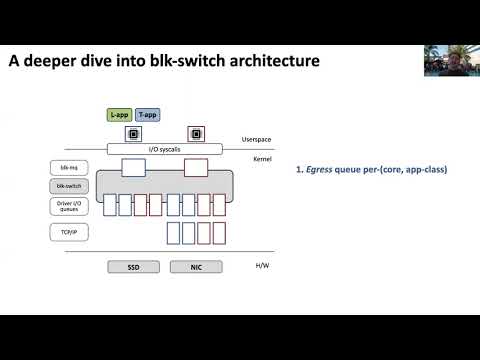Description:
Explore a groundbreaking conference talk that challenges the widespread belief about Linux's inability to achieve microsecond-scale latency and high throughput simultaneously. Dive into the innovative blk-switch architecture, a new Linux kernel storage stack design that adapts techniques from computer networking to revolutionize storage performance. Learn how this approach achieves microsecond-scale average and tail latency while allowing applications to fully utilize hardware capacity, even in high-contention scenarios. Discover the key insights behind blk-switch, including its conceptual similarity to network switches, prioritized processing, request steering, and application steering. Examine the evaluation setup, performance breakdown, and impressive results that demonstrate the potential for microsecond-scale latency in Linux, all without modifying applications, network hardware, or kernel components.

Rearchitecting Linux Storage Stack for µs Latency and High Throughput
Add to list